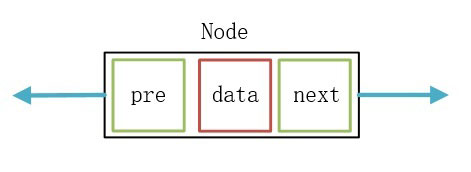懒汉模式
懒汉模式在第一次用到类实例的时候才会去实例化,就是不到调用getInstance函数时,这个类的对象是一直不存在的。懒汉本身是线程不安全的。
|
1 2 3 4 5 6 7 8 9 10 11 12 13 14 15 16 17 18 19 20 21 22 23 24 25 26 27 28 29 30 31 32 33 34 35 36 37 38 39 |
#include <iostream> using namespace std; class Singelton{ private: Singelton(){ m_count ++; printf("Singelton begin\n"); Sleep(1000);// 加sleep为了放大效果 printf("Singelton end\n"); } static Singelton *single;//定义一个唯一指向实例的指针,并且是私有的 public: static Singelton *GetSingelton();//定义一个公有函数,可以获取这个唯一实例 static void print(); static int m_count; }; //将唯一指向实例的指针初始化为nullptr Singelton *Singelton::single = nullptr; int Singelton::m_count = 0; Singelton *Singelton::GetSingelton(){ if(single == nullptr){//判断是不是第一次使用 single = new Singelton; } return single; } void Singelton::print(){ cout<<m_count<<endl; } int main() { singleton* a1 = singleton::GetInstance(); cout << a1 << endl; a1->print(); singleton* a2 = singleton::GetInstance(); cout << a2 << endl; a2->print(); system("pause"); return 0; } |
懒汉模式的singleton类有以下特点:
1.他有一个指向唯一实例的静态指针,并且是私有的。
2.它有一个公有的函数,可以获取这个唯一的实例,并且在需要的时候创建该实例。
3.它的构造函数是私有的,这样就不能从别处创建该类的实例。
饿汉模式
饿汉模式在单例类定义的时候(即在main函数之前)就进行实例化。因为main函数执行之前,全局作用域的类成员静态变量m_Instance已经初始化,故没有多线程的问题。
|
1 2 3 4 5 6 7 8 9 10 11 12 13 14 15 16 17 18 19 20 21 22 23 24 25 26 27 28 29 30 31 32 33 34 35 36 37 38 39 40 41 |
#include <iostream> #include <process.h> #include <windows.h> using namespace std; class Singelton{ private: Singelton(){ m_count ++; printf("Singelton begin\n"); Sleep(1000); // 加sleep为了放大效果 printf("Singelton end\n"); } static Singelton *single;//定义一个唯一指向实例的指针,并且是私有的 public: static Singelton *GetSingelton();//定义一个公有函数,可以获取这个唯一实例 static void print(); static int m_count; }; // 饿汉模式的关键:定义即实例化 Singelton *Singelton::single = new Singelton; int Singelton::m_count = 0; Singelton *Singelton::GetSingelton(){ // 不再需要进行实例化 //if(single == nullptr){ // single = new Singelton; //} return single; } void Singelton::print(){ cout<<m_count<<endl; } int main() { cout << "we get the instance" << endl; singleton* a1 = singleton::getinstance(); singleton* a2 = singleton::getinstance(); singleton* a3 = singleton::getinstance(); cout << "we destroy the instance" << endl; system("pause"); return 0; } |
线程安全的懒汉模式
在多线程环境下,懒汉模式的上述实现方式是不安全的,原因在于在判断instance是否为空时,可能存在多个线程同时进入if中,此时可能会实例化多个对象。于是出现了二重锁的懒汉模式,实现代码如下:
|
1 2 3 4 5 6 7 8 9 10 11 12 13 14 15 16 17 18 19 20 21 22 23 24 25 26 27 28 29 30 31 32 33 34 35 36 37 38 |
#include<iostream> #include<mutex> using namespace std; /*单例模式:构造函数私有化,对外提供一个接口*/ //线程安全的单例模式 class lhsingleClass { public: static lhsingleClass* getinstance() {//双重锁模式 if (instance == nullptr) {//先判断是否为空,如果为空则进入,不为空说明已经存在实例,直接返回 //进入后加锁 i_mutex.lock(); if (instance == nullptr) {//再判断一次,确保不会因为加锁期间多个线程同时进入 instance = new lhsingleClass(); } i_mutex.unlock();//解锁 } return instance; } private: static lhsingleClass* instance; static mutex i_mutex;//锁 lhsingleClass(){} }; lhsingleClass* lhsingleClass::instance=nullptr; mutex lhsingleClass::i_mutex;//类外初始化
int main() { lhsingleClass* lhsinglep5 = lhsingleClass::getinstance(); lhsingleClass* lhsinglep6 = lhsingleClass::getinstance(); cout << lhsinglep5 << endl; cout << lhsinglep6 << endl; system("pause"); return 0; } |
此代码共进行了两次判断:
- 先判断是否为空,如果为空则进入,不为空说明已经存在实例,直接返回。
- 再判断一次,确保不会因为加锁期间多个线程同时进入。


